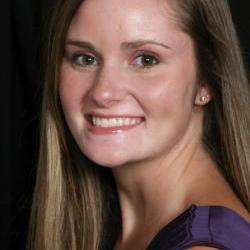The Doug Varone-curated Harkness Dance Festival at 92Y gives choreographers the rare chance to treat a workshop showing as a performance – that is, without the pressure of “presenting” a finished piece. Moreover, at Saturday night’s performance, Faye Driscoll had the luxurious opportunity to speak about her work-in-progress before the performance; the eager audience members were offered not only insight to the often deliberately ambiguous world of modern dance but also a small peak into Ms Driscoll’s dance mind. It is worth noting that Ms Driscoll is the rare breed of choreographer who can speak about her work in a way that is informative and articulate without crossing over into condescension.
Ms Driscoll’s as yet untitled piece featured five performers and sought to explore dependence within what she repeatedly referred to as the “performance ritual”. For most of the 40 or so minutes of dancing, the performers moved as one might imagine a group of giant, oddly symbiotic amoebas would: there was grappling, and flailing limbs, and wriggling, and sweat. One intriguing springboard for the dancers’ movement was the audience itself: after carefully observing all of us, sitting in house-lit round, the dancers began extracting unique facial characteristics from a few of us at a time, repeating and morphing these physical features until they became something else entirely. (This was demonstrated explicitly for the audience before the showing began, in a group exercise by the dancers.)
Really, the entire piece was a bit of super-interesting amorphousness. It was something like looking at clouds in the sky with friends – shapes change, specific images come and go and you are quite aware that the shapes you find are not those found by your cloud-observing mates. Where Ms Driscoll’s expertise comes in is at the pace of the piece: rather than allowing her audience to sort of loll in the shapes taking place, we were instead yanked from moment to moment, always alert and continuing to grab ahold of the next shape before the dancers could even put the finishing touches on it.
There are charming moments, too. The malleable-faced Brandon Washington lent the piece an air of mischievousness, and Anna Marie Shogren’s singular adaptation of facial tics felt remarkably real. I suppose humor is inevitable with such a wrestling of limbs, but that doesn’t mean the humor is any less interesting. One moment, both compelling and funny, occurred when Giulia Carotenuto appeared to be wrangling a pair of snarling, wiggling puppies – Jeremy Pheiffer and Mr Washington, one on each side. Later, Mr Pheiffer stood in the center of an arm-linked line and tossed the two ends of the line as if they were strands of spaghetti. Dancers bumped into each other with real force, and somehow formations of startling clarity emerged. (This is another of Ms Driscoll’s talents: chaos leading unexpectedly into a shining moment of assembled poignancy.)
Ms Driscoll also has a firm grip on pacing and dynamics, even in this unfinished form of the piece. In the middle of this hubbub of movement and appendages, the dancers lay down in a straight line, foot to outstretched hand, and slowly rolled themselves as a unit across the floor. Mr Pheiffer was the end of the line on my end, and he carefully acknowledged the shoes and shoe owners of each shape he passed, with pats, smiles and nods. (These dancers are delightfully unafraid of acknowledging their audience, not just uniformly but specifically. The air of confrontation is not uncomfortable; it is careful, rather.)
Ms Driscoll noted at the beginning of the evening that these dancers, culled from an audition, have been workshopping this piece for only a month or two. It is significant that they have already developed a very comfortable rapport with each other. And they are comparatively young, too – I suspect all are 30 or younger. This is unusual for me to see in the performances I review. Most tellingly, I didn’t seem to notice.


